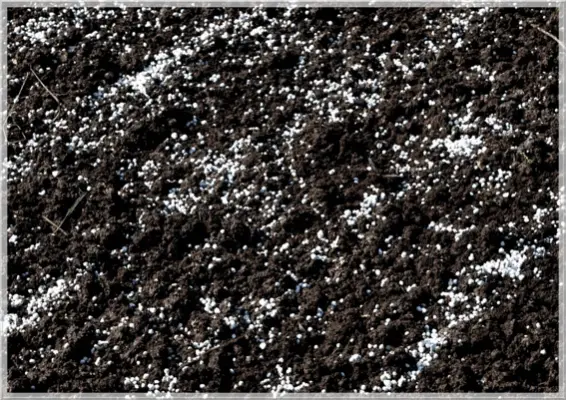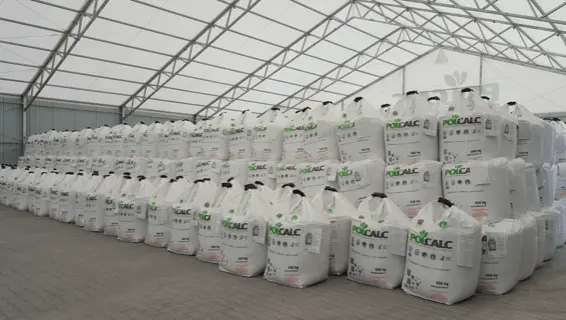
Among many farmers, there are still many outdated and completely ineffective methods of soil liming. Lime is often used without the necessary knowledge, resulting in the ineffectiveness of liming treatments. Thanks to years of research, Polcalc has developed the best liming model, which results in the best possible effects. Below are a few ironclad rules regarding the soil liming process:
Firstly, the method of surface liming
The most common mistake currently made by farmers is the method of lime application. Outdated and ineffective is the practice of spreading lime before plowing. Such a treatment results in a radical decrease in the soil's potential for neutralization by lime. Regardless of the type of lime used, spreading lime before plowing is a serious mistake. Unfortunately, many companies, agricultural advisors, and scientists seem to overlook this problem by perpetuating entrenched patterns - patterns that are completely contrary to the nature of the liming process. Often, dear farmers, you encounter advice from individuals selling lime, whether in bulk or granulated forms, that liming is best done after harvest, and the soil should be mixed - nothing could be more wrong. People who advise such treatments are simply ignorant and are not concerned with your benefits, but only their own. The only correct and effective method of soil liming is to spread lime fertilizer on the surface of a leveled field so that the lime contained in the fertilizer has time to slowly penetrate the plow layer. Let's remind ourselves that lime is a mineral fertilizer that needs water to move and only works through water, although it does not dissolve in it. Each particle of lime fertilizer evenly spread over the field surface, together with rainfall, penetrates the humus layer in a gravitational manner and combines with the acids in the soil - this is how the liming process should look. By mixing lime with soil, you cause lime to quickly leave your most valuable piece of land, the plow layer, in a gravitational manner. Lime never works in the opposite direction of gravity - it always goes down and quickly washes away because it is a heavy mineral fertilizer. It should be noted that lime is not a fertilizer for plants but for the soil. The most important action of lime is its effect on the soil, and only after the soil processes it initiates are completed do the plants benefit from it. The benefits of liming are numerous and activate in a cascading manner. By liming the soil, we cause weaker elements to be released by acids that previously bound them - as is the case with magnesium, for example. Therefore, the pH of the soil should be taken care of first, and only then should we focus on feeding the plants. Therefore, liming is a fundamental treatment.

- The uniformity of lime application is influenced by many factors, including the appropriate size of the granules - in the case of too large granules, the distance between them will be too large to effectively and evenly neutralize the soil. The optimal size of granules is in the range of 2 to 4 mm, as even with a dose of 500 kg per hectare, the fertilizer spreads sufficiently densely over the leveled field.
Secondly, the quality of lime fertilizer
There are many lime fertilizers on the market whose advertising often far exceeds their real and effective action. The effectiveness of lime fertilizer depends primarily on the quality of the neutralizing substance. For lime to be effective, the following conditions must be met:
– the fertilizer must be made from the appropriate raw material, which is not crystalline and easily releases calcium ions upon contact with acids. Crystalline forms of lime, despite having the form of lime meal, will not be reactive in the soil, and the fertilizer will not work.
– the fertilizer must be raw material, containing at least 95% calcium carbonate and as few other substances, including water, as possible. The lower the content of carbonates, the worse the fertilizer. Converting the composition of the fertilizer to CaO, as is done currently, is completely meaningless. An example of this is the recommendations of agricultural chemical stations, which provide fertilizer conversion to CaO and recommend, for example, that if the pH is low, you should apply 5 tons of CaO per hectare - this is total nonsense because it does not take into account the quality of the fertilizer. According to the agricultural station, whether you use chalk, oxide lime, dolomite, or erect a marble obelisk in the field weighing 10 tons, you will achieve the same effect of liming the field - after all, you theoretically introduced 5 tons of CaO. I won't even mention the liming method, which is also irrelevant for agricultural stations. Let's not go down this road - quality is fundamentally important.
– individual particles of fertilizer must be maximally pulverized to the size of a few microns in the majority of the mass. If the fertilizer consists of particles the size of sand (about 100-200 microns) or small stones (above 200 microns), you can be sure that it will not work despite the assurances of sellers that such a fertilizer works longer - this is absolutely untrue, bordering on fraud. A mineral fertilizer that is poorly or weakly pulverized can only work in 5-10% of the mass (of well-pulverized mass), the remaining part of the mass will never work. Once again, we emphasize - even though the stones contain calcium or magnesium, they will never be assimilable without their prior maximum pulverization. The pulverization of the raw material can easily be checked by pouring a tablespoon of fertilizer into a glass of water - if a milky suspension is formed and the fertilizer completely dissolves, forming a colloid, you can be sure that it will work if it is made from the appropriate raw material. However, if the fertilizer dissolves poorly or not at all, and sand and pebbles remain at the bottom, the fertilizer will certainly not work, and its effectiveness will be at the level of 5% of the mass. In other words, one ton of good fertilizer will replace 20 tons of identically looking "by eye" fertilizer, but consisting of pebbles and lime sand.

- Polcalc lime is a granulate created from selected raw material with the appropriate density and 100% reactivity. Each lime granule, thanks to its maximum pulverization parameters and the absence of adhesives, releases calcium ions very quickly - therefore, it is perfectly suitable for use in the method of modern liming.
How to use lime in agronomy
We have already discussed the most important, ironclad rules of the effective liming process and the quality of lime fertilizers, now it's time to reverse the long-standing agronomic method:
Namely, lime fertilizers have so far been considered marginal as a supplement to artificial fertilizers. However, this method nowadays brings farmers to the brink. Often, despite large investments in NPK and nitrogen fertilizers, farmers do not see the effects of their actions, blaming them for poor quality. The reason for this state of affairs is the improper approach and the wrong order of fertilizer application. We must completely reverse the order and essence of fertilization. Nitrogen and NPK fertilizers are fertilizers that can be grouped as fertilizers for plants. Lime fertilizers are fertilizers from the group of soil fertilizers. What does this mean in practice? In practice, of course, this means that the order is the most important: first, we prepare the soil, and then we nourish the plants. In other words, first, we lime the soil, and only then do we provide nutrients to the plants. Such an approach to agronomy eliminates many negative effects of using nitrogen and NPK fertilizers on acidic soils. The most important thing is to gain nitrogen and element assimilation. In acidic soil, acids are the "eaters" of nitrogen, phosphorus, and potassium, and then what remains is taken up by the plant. In a soil environment balanced by lime, all NPK is taken up by the plants.
You will see the effects for yourself ☺






